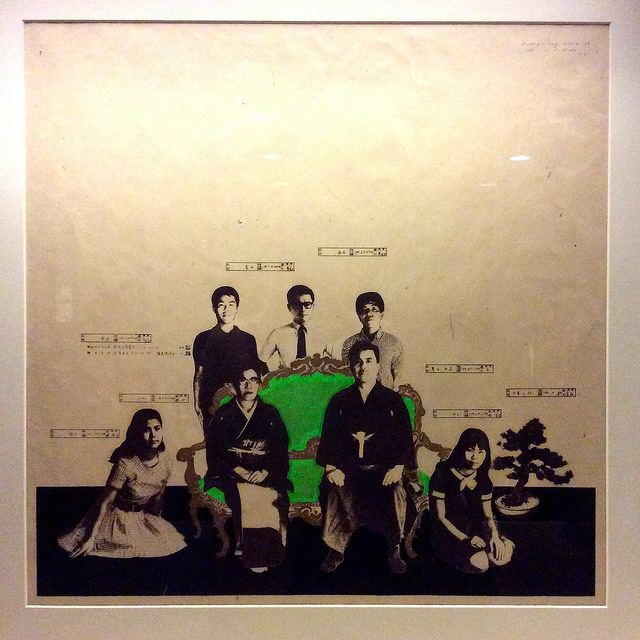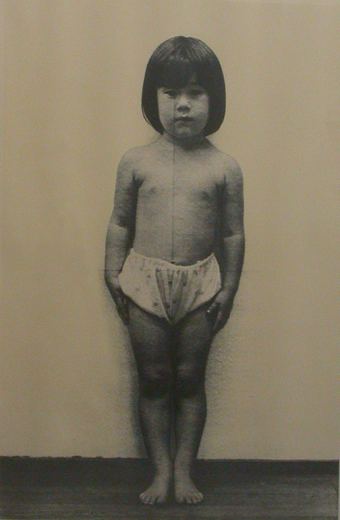Native name 野田 哲也 Books Days in a life Role Artist | Name Tetsuya Noda Nationality Japanese | |
 | ||
Known for Woodblock and screen print Education | ||
The Diary of Tetsuya Noda - 野田哲也の日記 - 野田哲也的日記
Tetsuya Noda(野田 哲也) (born 5 March 1940) is a contemporary artist and printmaker. He is a professor emeritus of the Tokyo University of the Arts. Noda specializes in artwork done as a series of woodblock, print, and silkscreened diary entries that capture moments in daily life. Noda is the nephew of Hideo Noda an oil painter and muralist.
Contents
- The Diary of Tetsuya Noda
- Early life family and education
- Before 1980
- 1990s
- 2000s
- Public collections
- Major exhibitions and awards
- Works
- Techniques
- Evaluation
- References

Early life, family and education

Noda was born in the Uki, Kumamoto Prefecture, on 5 March 1940. From 1959 to 1963, he studied painting and fine arts at the Tokyo National University of Fine Arts and Music. Noda was a student of Tadashige Ono in the art of woodblock printmaking.

In June 1971, Noda married Dorit Bartur, daughter of the Israeli ambassador to Japan.
Before 1980

At the age of 28, Noda won the International Grand Prize at the Tokyo International Print Biennale for diptych Dairy: August 22, 196 and Diary: September 11, 1968. In 1976, Noda was a judge at the 5th British International Biennial of Print in England. From 1978, Noda taught at the Tokyo National University of Fine Arts and Music. In 1978, Noda was a guest artist at the University of Alberta.
1990s
2000s
Public collections
Major exhibitions and awards
Works
Since 1968, Noda’s works have been inspired by themes of his own life. The motif is a comment on his daily life - his family, people he knows, his children’s growth and scenery along his way. He takes photographs of what he sees and likes, then develops and retouches them with pencil or brushes. His works are done using materials close at hand.
When asked about how he found his theme; “Diary as an opportunity”, He replied, “at the university I was not at all satisfied with the assignment of painting nudes, it did not seem the right way to express myself.” His independent thinking and determination were highly rewarded. “I started to use a mimeograph cutting machine for the photo images in addition to the woodblock printmaking techniques.” In 1968, four years after he graduated from the university, he received the International Grand Prize at the 6th Tokyo International Print Biennale; “for the audacious combination of photography with traditional woodblock print.
In the British Museum Magazine, Timothy Clark, the keeper of Japanese section wrote “ In nearly fifty years, Noda has created some 500 further works that continue his mesmerizing ‘Diary’ series, using the unique combination of color woodblock and photo-based silkscreen onto handmade Japanese paper that he has made his own. Personal snapshots are rigorously reworked to become subtle mementos of universal significance: ‘what’s in a life?’ we are constantly prompted to ask.”
Techniques
Noda’s techniques combine woodblock and mimeographed silkscreen printmaking methods based on traditional woodblock print making techniques that use water colors. As in the case of Ukiyo-e, printmaking a key-block is used to define the main image and is printed first, the colors are then applied with color blocks using registration marks. This is possible because the watercolors are transparent. Noda uses the photo-image in the place of the key-block. The mimeographed photo images are applied in the last stage after having printed the colored areas with woodblocks.
Evaluation
Daniel Bell talking about the originality of Noda's prints says, "Noda's distinctiveness lies in three things: the remarkably consistent subject matter of his work, the structure and configurations of his compositions, and the novel techniques, consciously derived from Ukiyo-e, as the means of realizing his intentions."
The curator in charge of the Achenbach Foundation for Graphic Arts at the Fine Arts Museums of San Francisco Robert Flynn Johnson wrote, “it is Tetsuya Noda who stands as the most original, innovative, and thought-provoking Japanese printmaker of his era".
Lawrence Smith, formerly Keeper of Japanese Antiquities at The British Museum wrote, "He is a master in at least four artistic genres , all of them closely related to painting. If considered as a printmaker, no Japanese can remotely equal his range of subject… Noda is unquestionably the greatest Japanese printmaker alive. But if considered as a creator of work very close to painting, one has also to ask what living Japanese could be considered his equal… but in my view not one of them can rival his remarkable range of subjects and emotions".
Steven Co, art collector wrote, "Tetsuya Noda’s Diary Series is a visual map of temporal, personal, experiential, and lyrical moments. Noda strives to preserve memory with the objectivity of his camera, but then disrupts the resulting photograph with the subjectivity of his pencils and brushes before committing the memory to a print. As if to ensure that a memory is engraved into his mind, he would repeatedly retreat to that memory with rigor and vigor by personally pulling each print by hand. The result and effect are quiet and understated accounts of memories revisited, reassessed, and repeatedly asserted through this labor-intensive process. Mr. Noda’s works are as much about the process of making them as the pleasingly introspective and sensitive result of a single work or his whole body of works".
